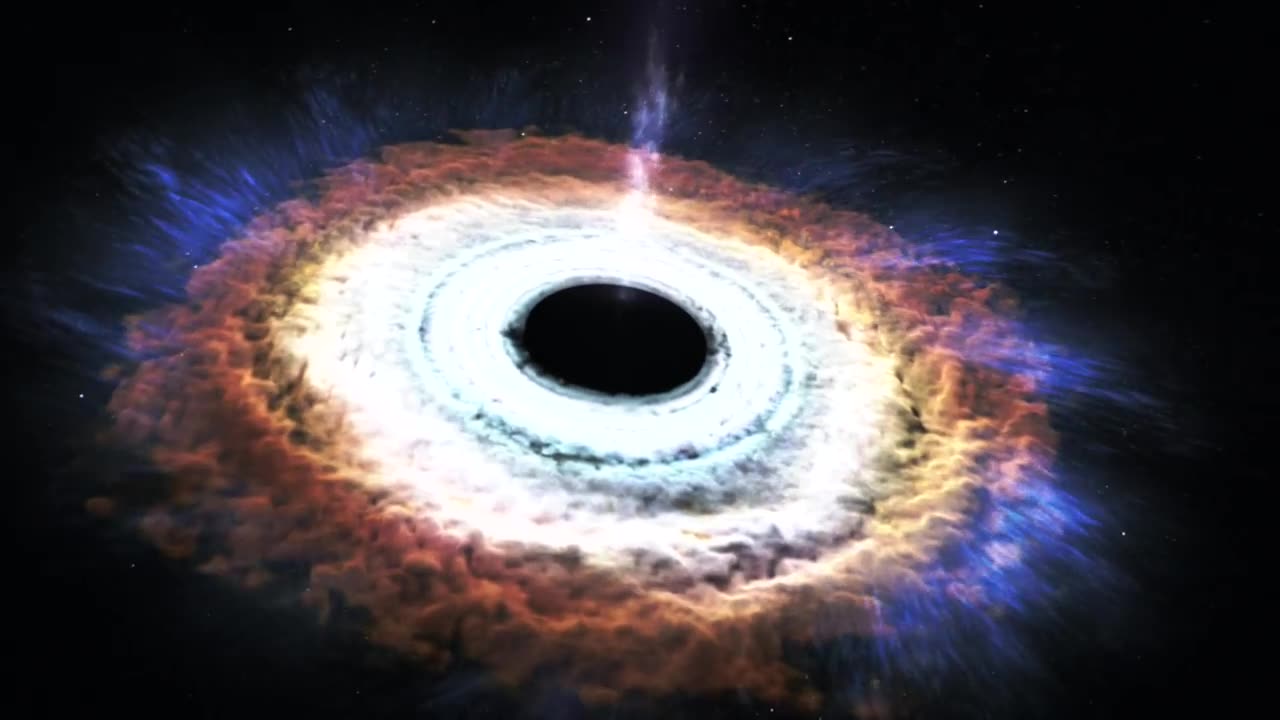Premium Only Content

NASA | Massive Black Hole Shreds Passing Star
NASA | Massive Black Hole Shreds Passing Star
6.2M views · 7 years ago...more
NASA Goddard
1.51M
Subscribe
17K
Share
Save
Report
Comments904
David John
You can tell it is fake because you cannot hear music in space.
Up next
0:26
Go to channel
Black Hole Eats Star, Beams Signal to Earth
NASA Video•383K views
4:55
What If You Fell Into a Black Hole?
What If•13M views
2:33
Simulating Star-Formation in real time
Computervisualistik Koblenz•45K views
11:45
Seven Heavens And 7 Earths In Quran And Science | Urdu / Hindi
HASI TV•1.5M views
5:45
Amazing Journey From Earth to the End of the Universe
CoconutScienceLab•3.6M views
13:56
Earn $25/Daily From YouTube Shorts by Copy-Paste Online Work from Home
Kashif Majeed•441K views
7:25
Biggest People Ever Found On Earth | Haider Tv
Haider Tv•740K views
27:10
The Black Hole – [Hindi] – Quick Support
Quick Support•2.8M views
9:01
Mars Exploration Rover 2003 (HD)
maasdigital•9.1M views
6:33
★ How to Get to Mars. Very Cool! HD
Anders Heli Hansen•124M views
5:08
Universe Size Comparison 3D
Harry Evett•149M views
14:28
What Are Best Foods For Rheumatoid Arthritis Patients
dr afzal critical care medicine•312K views
Description
NASA | Massive Black Hole Shreds Passing Star
NASA Goddard
17K
Likes
6,257,613
Views
2015
Oct 21
This artist’s rendering illustrates new findings about a star shredded by a black hole. When a star wanders too close to a black hole, intense tidal forces rip the star apart. In these events, called “tidal disruptions,” some of the stellar debris is flung outward at high speed while the rest falls toward the black hole. This causes a distinct X-ray flare that can last for a few years. NASA’s Chandra X-ray Observatory, Swift Gamma-ray Burst Explorer, and ESA/NASA’s XMM-Newton collected different pieces of this astronomical puzzle in a tidal disruption event called ASASSN-14li, which was found in an optical search by the All-Sky Automated Survey for Supernovae (ASAS-SN) in November 2014. The event occurred near a supermassive black hole estimated to weigh a few million times the mass of the sun in the center of PGC 043234, a galaxy that lies about 290 million light-years away. Astronomers hope to find more events like ASASSN-14li to test theoretical models about how black holes affect their environments.
During the tidal disruption event, filaments containing much of the star's mass fall toward the black hole. Eventually these gaseous filaments merge into a smooth, hot disk glowing brightly in X-rays. As the disk forms, its central region heats up tremendously, which drives a flow of material, called a wind, away from the disk.
-
 2:04:24
2:04:24
Side Scrollers Podcast
16 hours agoColbert CANCELLED, Donkey Kong Bananza “Disappointing”, $100k in Pokémon STOLEN | Side Scrollers
3.14K4 -
 1:17:57
1:17:57
Omar Elattar
1 month ago"The #1 Health Protocol" – Gary Brecka REVEALS The Longevity Secrets of Ronaldo, Dana White & Top 1%
1.36K -
 21:29
21:29
GritsGG
12 hours agoUpdate Your Loadout w/ This KILO Sniper Support Build!
9861 -
 LIVE
LIVE
Lofi Girl
2 years agoSynthwave Radio 🌌 - beats to chill/game to
220 watching -
 DVR
DVR
SpartakusLIVE
10 hours agoFriday Night HYPE || WZ Solos, PUBG, and maybe even OFF THE GRID?!
90.5K -
 3:24:24
3:24:24
megimu32
6 hours agoOFF THE SUBJECT: FAFO FRIDAY - Bodycam Madness + Mortal Kombat Mayhem!
45.5K10 -
 2:08:59
2:08:59
I_Came_With_Fire_Podcast
13 hours agoTRUMP WANTS TO KILL TRANS KIDS | CHINA IN TROUBLE | NYC IS RETARDED | WHO WILL WIN THE MIDTERMS
65.5K17 -
 2:05:52
2:05:52
TimcastIRL
7 hours agoTrump Russia HOAX DECLASSIFIED, Obama Officials EXPOSED In “TREASONOUS CONSPIRACY”
173K154 -
 2:58:12
2:58:12
SavageJayGatsby
8 hours agoLockdown Protocol - Wedding in 3 Months! - Halftway to 100!
65.8K2 -
 2:41:27
2:41:27
Mally_Mouse
11 hours agoFriend Friday!! - Let's Play! - Lockdown Protocol
49.4K4